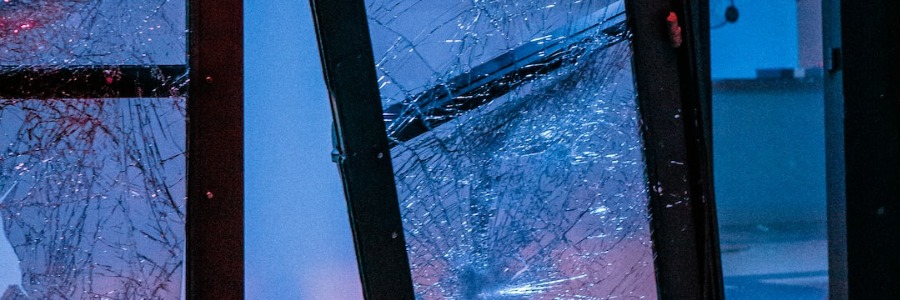Texas Vandalism Laws
Property damage is always at the heart of a criminal mischief prosecution under Texas vandalism statutes, and the severity of the charge is always proportional to the monetary value of the harm. If you are facing vandalism accusations in Texas, you should consult with an expert attorney who can provide you with the strongest available defenses in order to mitigate the repercussions of such charges.
Vandalism may appear to be innocuous at the moment, but if you are charged with a misdemeanor or felony criminal mischief, a conviction can impair your job prospects and haunt you in other ways for the rest of your life. Property damage attorneys have the knowledge and experience to fight Texas criminal mischief accusations and mount the best defense possible to protect your freedom and reputation.
Texas Laws on Vandalism and Criminal Mischief
Following a closely contested high school football game in Victoria County, one or more individuals crossed a line because of the Texas love for football. School administrators discovered sliced seat cushions, damaged shower curtains, and a broken water fountain in the visiting team locker room after a home team victory. Texas law enforcement officials no longer dismiss such acts as teenage misbehavior but instead, aim to prosecute the culprits for vandalism and criminal damage.
A person commits criminal mischief in Texas if he or she willfully or knowingly destroys, modifies, or defaces another person’s physical property. This includes tampering with or harming personal property in ways that lessen its worth or cause financial loss or annoyance to the owner. Graffiti offenses include drawing on or marking another person’s property with paint or indelible ink.
Property damage alone is insufficient to support a criminal mischief allegation. A prosecutor must additionally show that a defendant acted purposefully or with knowing that their conduct will cause harm or destruction to someone else’s property. Even if a prosecution is unable to prove intent, a person might still be charged with reckless conduct. The precise facts of each case will decide the type of charges that are brought.
What is considered vandalism in Texas?
Vandalism is a serious crime in Texas and can lead to severe consequences if convicted. According to the Texas Penal Code, vandalism is defined as the intentional or knowing destruction, damage, or defacement of someone else’s property without their consent.
This includes graffiti, keying someone’s car, breaking windows, damaging school property, and other similar acts that cause damage or defacement.
It’s important to note that the damage does not have to be permanent to be considered vandalism. Even if the affected property can be repaired or cleaned, the person responsible can still face charges and penalties.
Additionally, it doesn’t matter if the property is publicly or privately owned. Vandalism is vandalism, and the law treats it as such.
The severity of the charges and consequences of vandalism in Texas will depend on the value of the damage caused. For example, if the damage is less than $100, the offender can face a Class C misdemeanor charge, which can lead to a fine of up to $500.
However, if the damage is valued at $30,000 or more, the offender can face a third-degree felony charge, leading to a prison sentence of up to 10 years and a fine of up to $10,000.
Other charges Associated with Vandalism
Vandalism is a serious crime that can result in severe consequences and charges. In Texas, different charges can be associated with vandalism, depending on the severity of the crime and the amount of damage caused.
One of the most common charges associated with vandalism is criminal mischief. This charge applies to any damage caused to property that is not yours, and it can range from a Class C misdemeanor to a first-degree felony, depending on the value of the damage caused.
Another charge that may be associated with vandalism is graffiti and graffiti-related offenses. This charge applies to any damage caused by writing, painting, or drawing on public or private property without the owner’s permission. This charge can result in a Class B misdemeanor, but it can be increased to a Class A misdemeanor if the damage exceeds $2,500.
It’s important to note that if a person is found guilty of vandalism, they may face additional charges, such as trespassing, burglary, or even assault. In some cases, the charges may also depend on the location of the crime, such as schools or religious places, which can result in enhanced charges and penalties.
Criminal Mischief in Texas
Have you or a family member been charged with criminal mischief in Texas? Seek legal counsel to avoid putting yourself at the whim of the uncaring courts. This section will look at examples of criminal mischief, categories, sanctions, repercussions, and viable defenses. Our goal is to ensure that your rights have not been violated and that you receive all of the compassion that the legal system provides individuals, regardless of whatever mistakes they may have made.
If you’re asking, “What is criminal mischief?” look no further than Texas Penal Code Section 28.03, which classifies criminal mischief alongside arson and other property damage offenses. A person commits criminal mischief if, according to the law, he or she:
- Intentionally or knowingly damages or destroys tangible property belonging to another owner.
- Intentionally or knowingly tampers with tangible property of another owner, causing loss or inconvenience.
- Intentionally or knowingly makes markings, inscriptions, slogans, drawings, or paintings on a property.
Potential Punishments for Vandalism in Texas
With one exception, Texas establishes a $2,500 threshold to distinguish between a misdemeanor and felony criminal mischief. Losses of less than $2,500 will be charged as a Class A, B, or C misdemeanor, but they can still result in up to a year in jail and fines of up to $4,000, in addition to any restitution ordered. If the loss surpasses $2,500, the perpetrator may be charged with felony criminal mischief, which carries a two-year prison sentence and a $10,000 fine. The only exception to the $2500 value criterion is because Texas law defines a separate felony category for damage to livestock fences, regardless of the cash worth of the fence.
| Texas Vandalism Charge | Description |
|---|---|
| Criminal Mischief – Class C Misdemeanor | Causing damage of less than $100 to property. |
| Criminal Mischief – Class B Misdemeanor | Causing damage between $100 and $750 to property. |
| Criminal Mischief – Class A Misdemeanor | Causing damage between $750 and $2,500 to property. |
| Criminal Mischief – State Jail Felony | Causing damage between $2,500 and $30,000 to property. |
| Criminal Mischief – Third-Degree Felony | Causing damage between $30,000 and $150,000 to property. |
| Criminal Mischief – Second-Degree Felony | Causing damage between $150,000 and $300,000 to property. |
| Criminal Mischief – First-Degree Felony | Causing damage of $300,000 or more to property. |
Difference between a Misdemeanor and Felony charge
In Texas, vandalism can either be charged as a misdemeanor or a felony, depending on the severity of the offense. A misdemeanor charge may be given for a first-time offender who causes less than $750 damage. This is considered a Class C misdemeanor and is punishable by a fine of $500.
However, if the damage caused is more than $750, the offender can be charged with a Class B misdemeanor. This charge can result in a fine of up to $2,000, a jail sentence of up to 180 days, or both.
On the other hand, a felony charge may be given for severe cases of vandalism, such as causing damage that exceeds $30,000. This is considered a state jail felony and is punishable by a fine of up to $10,000, imprisonment for 180 days to 2 years, or both.
It’s important to note that repeat offenses can also result in harsher charges, and the offender may be required to pay restitution to the victim for the damages caused.
Defacing Public Property vs. Private Property
Defacing public property is when someone damages or alters any property that belongs to the government, such as a park bench, public building, or statue. This type of vandalism is considered a more serious offense and can result in more severe charges and consequences.
On the other hand, defacing private property is when someone damages or alters any property that belongs to an individual or a business. This can include spray painting graffiti on a fence or scratching a car. Although this type of vandalism is still a serious crime, the charges and consequences may not be as severe as defacing public property.
Common Defenses to Vandalism Charges in Texas
No two situations that involve criminal mischief are alike. Consider, for example, a few recent Texas vandalism cases:
- In June 2018, police charged a Grand Prairie man with criminal mischief for shooting out the windows and doors of a number of businesses;
- In July 2018, a suspect broke into a high school in North Mesquite and broke vending machines and other property;
- A burglar caused more than $10,000 in losses to a downtown McKinney restaurant in November 2018, breaking out windows and damaging chairs;
- Three persons were indicted for vandalism in San Antonio in June 2018 after spray-painting slogans in opposition to First Lady, Melania Trump, on the San Antonio Mission National Historical Park Visitor’s Center.
The culprits in some of these incidents were captured on videotape while conducting the acts. It will be more difficult for a prosecutor to prove a defendant’s guilt beyond a reasonable doubt if there is no video or other direct evidence linking a defendant to specific property damage. As a result, one of the most prevalent defenses allowed under Texas vandalism laws is insufficient proof. Other possible defenses include the following:
- Consent of the owner of the damaged property;
- The damaged property was owned by the defendant, which raises the sometimes-difficult challenge of proving who owned the property;
- Accidental damage or damage without intent;
- False or incorrect identification of the perpetrator from witnesses.
In every criminal mischief case, the defense attorney will push the prosecutor to show the defendant’s guilt beyond a reasonable doubt. Busy prosecutors frequently make assumptions and take shortcuts to persuade jurors that a person is guilty. A qualified vandalism defense lawyer will notice every flaw in the prosecutor’s case and make every legal effort to lessen or eliminate the possibility of a conviction.




